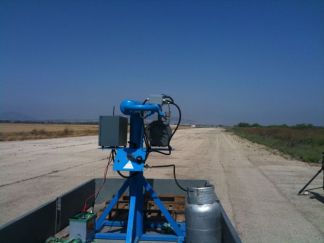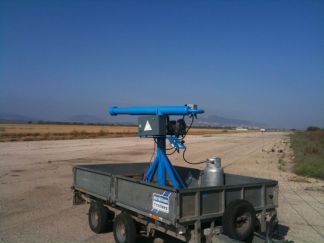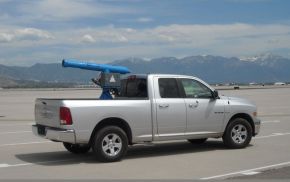PDT - Bird Control with Shockwaves
Unlike most other animals, birds' bones and body cavity contains large pockets of air, which helps them fly, to determine their position, orientation and altitude in the air. Pulse Detonation Technology (PDT) sends out continuous waves of air pressure, which disorients the birds. As soon as the Thunder Generator goes off, birds leave the area. It is an effective and harmless way to repel birds.
Video of the PDT at a landfill:
Video of the PDT at a landfill:
Um diesen Film anzuzeigen muss Javascript aktiviert
und der Flash Player installiert sein.
und der Flash Player installiert sein.
Characteristics of the Shockwave Generator
The shockwave generator uses precisely controlled detonations to create pressure waves through the air. Because birds' bodies have an extensive system of air sacs this wave of increased pressure is immensely disorienting to them (though not at all dangerous). The change of air pressure is about the same as riding the elevator down five to six floors. Unlike with cannons that use only loud noise, birds do not become accustomed to the sensation of the pressure wave washing over them.
- The cannon has no moving parts
- Range: ca. 500 m, depending on fuel
- Fuel: LPG, propane, or ethylene (power varies among fuel types)
- Fuel consumption: 2.5 g per shot
- Rate of fire: 60 shots per minute (1 Hz)
- Weight: 80 kg (not including gas cylinder)
- Calibre: 125 mm
- If combined to a network, a large area can be covered.
- remote control available
- very low cost of ownership
Using the Shockwave generator requires training.
Our service: Ask for a demonstration
If interested, a demonstration at your site may be requested.
PDT at an airfield

PDT at an airfield

PDT at an airfield
Pros
- No habituation
- Covers large areas, either singly (rotating on axis) or in arrays
- Easy to maintain: solid construction, low fuel costs, and no moving parts
- Very low cost of ownership
- Single or multiple barrel shapes are customizable for specific applications
- Included remote control allows control and operation from safe distances
Cons
- This device requires training for implementation and maintenance

